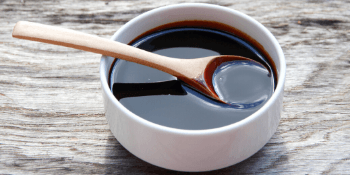By Dr. Cayla Iske, PhD
The digestive tracts of small hindgut fermenting mammals such as rabbits, guinea pigs, and chinchillas, are not designed to digest large amounts of simple carbohydrates and sugars. Because of this, it can be concerning to see ingredients that evoke thoughts of sweet, sugary food in your small pet’s daily diet. One prime example of an ingredient that sometimes gets a bad name (but one that serves an important purpose in our foods) is cane molasses.
What is Cane Molasses?
Cane molasses is a dark, viscous liquid made from sugar cane.

It is made by crushing the fresh-cut plant to extract its juice. This juice is then boiled to make a thick syrup to promote sugar crystallization. The sugar crystals are then extracted, and the liquid is boiled again. After a second sugar crystal extraction, molasses remains.
Nutrient Profile
Cane molasses is completely made from the sugar cane plant and also contains several beneficial nutrients. Molasses is relatively rich in several important minerals such as potassium and iron which help promote healthy blood pressure and bone health as well as B vitamins such as pyridoxine (B6) which support nutrient metabolism and cellular maintenance. Additionally, molasses contains beneficial antioxidants that help protect the entire body from oxidative stress and associated diseases.
Simple vs. Complex Carbohydrates
One common misconception is that cane molasses is just a simple sugar like glucose, sucrose, and others. Molasses is not a refined sugar and actually contains many complex nutrients, including complex carbohydrates. Both simple and complex carbohydrates are important to animals as they are converted to glucose and used by the body for energy. Simple carbs (e.g. sugars), however, are broken down very quickly and cause sudden spikes in blood sugar (hyperglycemia). Complex carbs, however, digest more slowly and don’t result in dramatic blood sugar spikes as is the case with simple carbs.
Studies have even shown that low inclusions of molasses in the diet improve good cholesterol (high-density lipoprotein) in rats. This good cholesterol (HDL) can help prevent atherosclerosis by promoting movement of cholesterol away from the heart to prevent buildup and plaque formation.
But Why is it Needed?
You still may be asking yourself why molasses is needed in small animal pellets at all. Your pets don’t need added sugar or carbohydrates, so what’s the point? Oxbow pellets are fortified and uniform to prevent selective feeding that commonly occurs in high sugar, high starch muesli mixes. Our foods are formulated to be high in beneficial fiber and these ingredients are often very dry. To incorporate these healthy hay and grain ingredients, cane molasses is added at low inclusions in some of our products to aid in the binding of naturally high-fiber ingredients and provide product stability. This natural, plant-based ingredient ensures a uniform pellet that has the structural integrity to not fall apart and crumble before it reaches your fur baby’s bowl.
How Much Molasses in Actually in My Pet’s Food?
At typical inclusions, the molasses in our formulas adds only about 0.5 to 1.5 grams of sugar per half cup of pelleted food. For reference, this is the same amount of sugar that is in 3 or 4 grams (or roughly 1 teaspoon) of apple or carrot.
At Oxbow, we believe every single ingredient in our diets should have a beneficial purpose. Cane molasses is no exception. This plant-based, natural binder helps us create tasty fiber-packed morsels your little friends will gobble up.
